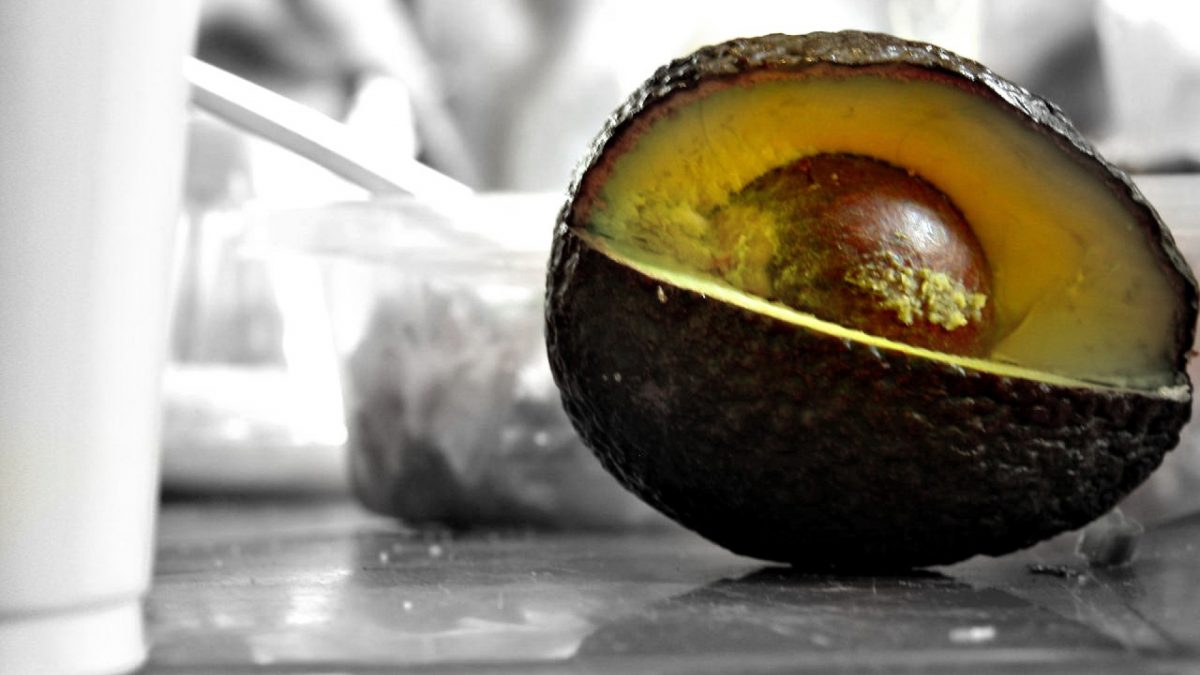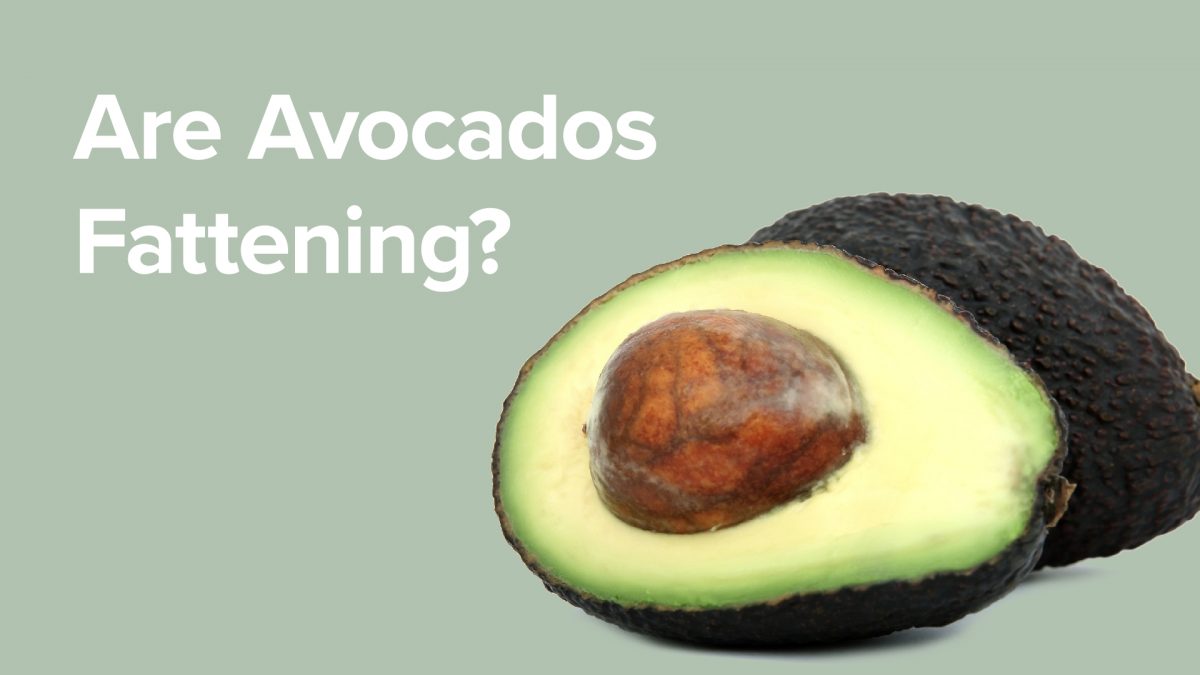
Avocados
My grandfather died of pancreatic cancer. By the time the first symptom arose—a dull ache in his gut—it was too late. Pancreatic cancer is among the most lethal forms of cancer, with just 6 percent of patients surviving five years after diagnosis. As many as 20 percent of cases may be a result of tobacco smoking, and other modifiable risk factors include obesity and heavy alcohol consumption. Specific dietary factors may also play a significant role in this deadly disease’s development. For instance, how the fat in our diet may contribute to pancreatic cancer risk has long been a subject of debate. The inconsistency of research findings on the impact of total fat intake may be partly because different fats affect risk differently. The expansive National Institutes of Health and American Association of Retired Persons co-sponsored study was the first to separate out the role of fats from animal sources, including meats, dairy products, and eggs, versus plant sources, such as those in nuts, seeds, olive and vegetable oils, as well as avocados. The consumption of fat from all animal sources was significantly associated with pancreatic cancer risk, but no correlation was found with the consumption of plant fats.
Not all fats affect our muscle cells similarly either. For example, palmitate, the saturated fat found mostly in meat, dairy, and eggs, causes insulin resistance, while oleate, the monounsaturated fat found mostly in nuts, olives, and avocados, may actually protect against saturated fats’ detrimental effects. Saturated fats may result in the accumulation of more toxic breakdown products and free radicals, and can cause inflammation and the dysfunction of the little power plants in our cells (mitochondria). Monounsaturated fats, however, are more likely to be detoxified by the body or safely stored away.
When paired with greens, healthy fat sources—such as from avocados—may maximize nutrient absorption, as many of the nutrients greens are famous for are fat soluble, including beta-carotene, lutein, vitamin K, and zeaxanthin. Similarly, adding some avocado to our salsa may triple the amount of fat-soluble nutrients that make it into our bloodstream. Just three grams of fat in an entire hot meal may be sufficient to boost absorption, a single walnut or a spoonful of avocado. The greens and fat source just have to end up in our stomach at the same time.
For substantiation of any statements of fact from the peer-reviewed medical literature, please see the associated videos below.
Image Credit: Pixabay. This image has been modified.
Popular Videos for Avocados


Are Avocados Fattening?
Studies funded by the Avocado Board suggest avocados may facilitate weight loss, but compared to...
Are Avocados Healthy?
Avocado consumption can improve artery function, but what effect might guacamole have on cancer risk?
Are Avocados Good for Your Cholesterol?
Can guacamole lower your cholesterol as well as other whole-food fat sources like nuts, or...
The Effects of Avocados and Red Wine on Meal-Induced Inflammation
Whole plant sources of sugar and fat can ameliorate some of the postprandial (after-meal) inflammation...
The Effects of Avocados on Inflammation
High-fat plant foods—avocados, peanuts, and walnuts—and olive oil are put to the test.All Videos for Avocados
-

Risks and Benefits of Nicotinamide Mononucleotide (NMN), a NAD+ Booster
NR may just be a waste of money, safe but ineffective. NMN seems similarly useless in humans, but it may not even be safe.
-

Natural Ozempic Alternatives: Boosting GLP-1 with Diet and Lifestyle
Certain spices and the quinine in tonic water can boost GLP-1, but at what cost?
-

The Best Way to Boost NAD+: Supplements vs. Diet (webinar recording)
The pros and cons of all the NAD+ supplements and what are the ways to boost NAD+ naturally with diet and lifestyle?
-

3 Healthy, Easy Recipes: Appetizer, Pasta, and Dessert
Celebrate the season with recipes from my cookbooks.
-

Banana vs. Mango Smoothies for Polyphenol Absorption
How can you mediate the phytonutrient-destroying enzyme in avocados, bananas, and mushrooms?
-

The Downside to Banana Smoothies for Polyphenol Absorption
An enzyme in bananas can destroy some of the phytonutrients in berries and cocoa, but there is a way to reduce the effect.
-

Foods That Cause Inflammation
Inflammatory markers can double within six hours of eating a pro-inflammatory meal. Which foods are the worst?
-

Cut the Calorie-Rich-And-Processed Foods
We have an uncanny ability to pick out the subtle distinctions in calorie density of foods, but only within the natural range.
-

Evidence-Based Weight Loss – Live Presentation
In this live presentation, Dr. Greger offers a sneak peek into his book How Not to Diet.
-

Recipe: Easy Veggie Tacos
This recipe for Veggie Tacos comes from staff member Ángela.
-

Recipe: Edamame Guacamole
Here’s a spin on traditional guacamole, from the How Not to Die Cookbook.
-

Dr. Greger on Live with Kelly and Ryan
Watch my JanYOUary 2018 segment on Live with Kelly and Ryan.
-

Do Lutein Supplements Help with Brain Function?
Avocados, greens, and lutein and zeaxanthin supplements are put to the test for improving cognitive function.
-

Brain-Healthy Foods to Fight Aging
What is the best source of lutein, the primary carotenoid antioxidant in the brain?
-

The Effects of Avocados on Inflammation
High-fat plant foods—avocados, peanuts, and walnuts—and olive oil are put to the test.
-

Dr. Greger’s Daily Dozen Checklist
In my book How Not to Die, I center my recommendations around a Daily Dozen checklist of everything I try to fit into my daily routine.
-

Are Avocados Fattening?
Studies funded by the Avocado Board suggest avocados may facilitate weight loss, but compared to what?
-

Avocados Lower Small Dense LDL Cholesterol
What are the effects of oatmeal, walnuts, extra virgin olive oil, and avocados on LDL cholesterol size?
-

Are Avocados Good for Your Cholesterol?
Can guacamole lower your cholesterol as well as other whole-food fat sources like nuts, or is that just spin by the avocado industry?
-

Are Avocados Healthy?
Avocado consumption can improve artery function, but what effect might guacamole have on cancer risk?
-

Dr. Greger’s Daily Dozen Checklist
In my book How Not to Die, I center my recommendations around a Daily Dozen checklist of all the things I try to fit into my daily routine.
-

The Effects of Avocados and Red Wine on Meal-Induced Inflammation
Whole plant sources of sugar and fat can ameliorate some of the postprandial (after-meal) inflammation caused by the consumption of refined carbohydrates and meat.
-

How to Prevent Blood Sugar & Triglyceride Spikes After Meals
Within hours of eating an unhealthy meal, we can get a spike in inflammation, crippling our artery function, thickening our blood, and causing a fight-or-flight nerve response. Thankfully, there are foods we can eat at every meal to counter this reaction.
-

The Downside of Green Smoothies
Concerns about smoothies and oxalic acid, nitrate availability, dental erosion, and weight gain are addressed.
-

What Causes Diabetes?
Saturated fat can be toxic to the insulin-producing beta cells in the pancreas, explaining why animal fat consumption can impair insulin secretion, not just insulin sensitivity.
-

Lipotoxicity: How Saturated Fat Raises Blood Sugar
The reason those eating plant-based diets have less fat buildup in their muscle cells and less insulin resistance may be because saturated fats appear to impair blood sugar control the most.
-

Plant-Based Atkins Diet
Harvard study found that men and women eating low carb diets live significantly shorter lives, but what about the “eco-Atkins diet,” a plant-based, low carbohydrate diet?
-

Are Avocados Bad for You?
The insecticide and fungicide compound found naturally in avocados (persin) may damage the DNA of normal cells, as well as cancer cells.
-

Are Avocados Health-Promoting?
Persin, a natural toxin found in avocados, appears so effective at killing breast cancer cells that it is being considered as a chemotherapy agent.
-

Do Doctors Make the Grade?
Doctors and other health professionals were put to the test for their nutrition knowledge regarding diet and heart disease.
